17 Lovely Hydrangea Varieties Perfect for Your Garden
A garden filled with hydrangeas always feels inviting and full of life. Their large blossoms create a peaceful atmosphere while adding splashes of color to every corner. From classic varieties to more unusual blooms, there is a style for every taste. Many gardeners appreciate how these plants can adapt to different spots in the yard. They are known to bring texture, shape, and charm to the overall look of your garden.
This post may contain affiliate links, which helps keep this content free. Please read our disclosure for more info.
Bigleaf Hydrangea (Hydrangea macrophylla)
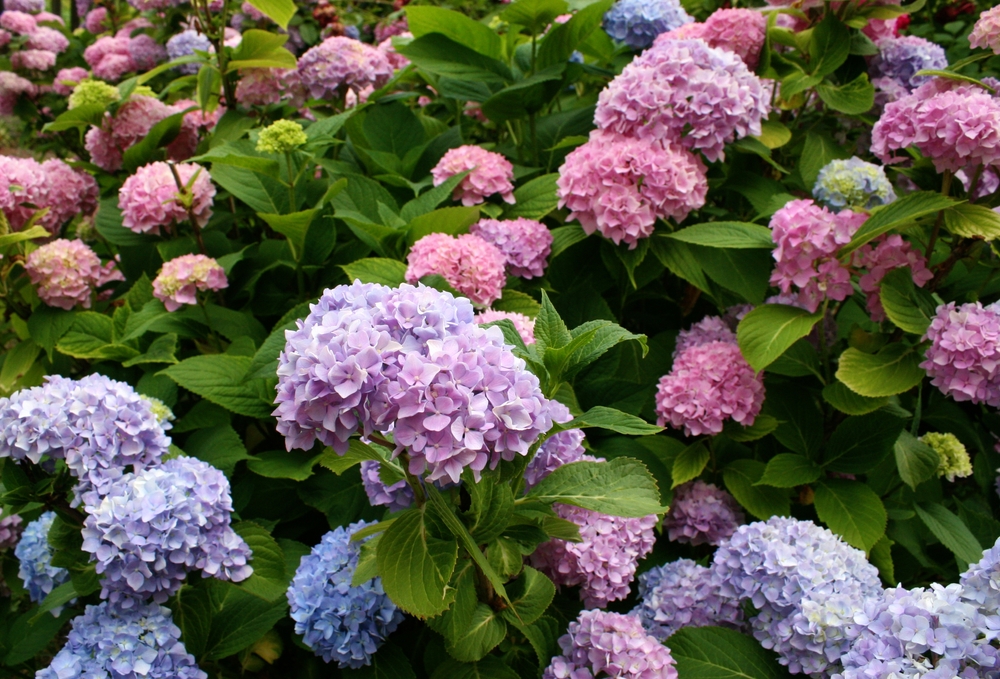
Bigleaf hydrangeas are one of the most popular types you will see in home gardens. Their blossoms come in shades of blue, pink, or purple, depending on the soil’s pH level. These shrubs bloom from late spring through summer, creating a showy display. They thrive in partial shade and moist, well-drained soil. Their rounded flower clusters add elegance to any garden bed.
They are also a favorite for cut flower arrangements due to their large, long-lasting blooms. Gardeners often enjoy changing the soil conditions to experiment with different bloom colors. These shrubs usually grow about 3 to 6 feet tall, making them manageable for most spaces. A layer of mulch around the base helps retain soil moisture during warm months. With their adaptability, they bring reliable color year after year.
Oakleaf Hydrangea (Hydrangea quercifolia)
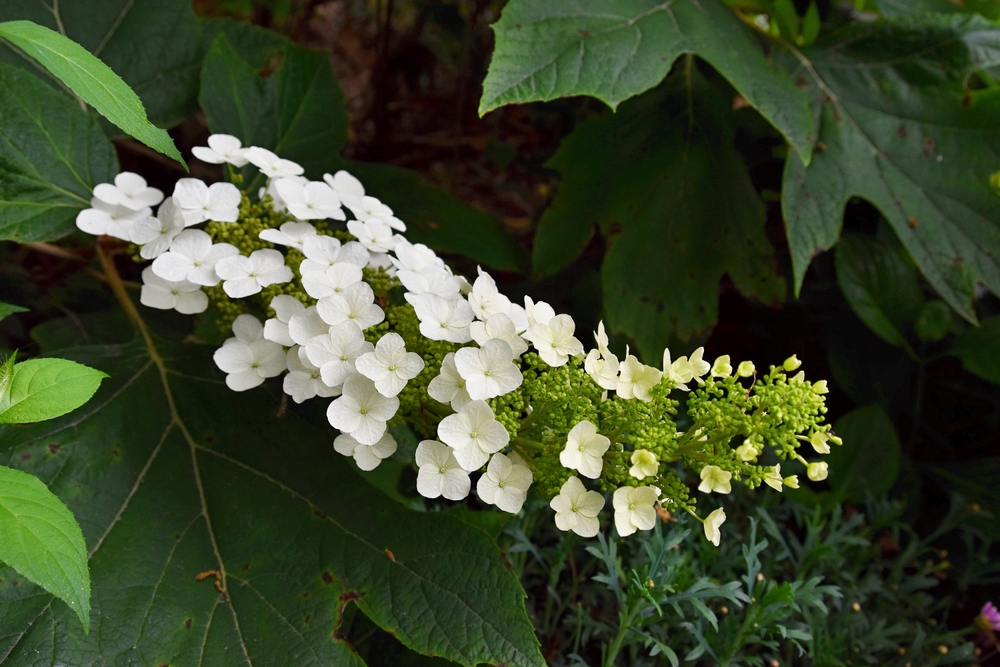
Oakleaf hydrangeas are known for their distinctive leaves that resemble oak foliage. Their large, cone-shaped blooms appear white and gradually turn pink or brown as they age. In autumn, their foliage changes to shades of red, orange, and purple, making them stand out. They prefer a spot with partial shade and soil that stays consistently moist. These plants usually reach between 4 and 8 feet in height.
Their peeling bark adds winter interest, making them attractive all year. Oakleaf hydrangeas are native to the southeastern United States, giving them good tolerance to heat. They are excellent choices for naturalized landscapes and woodland gardens. Their strong stems hold up the heavy blooms, preventing drooping. With their mix of summer flowers and fall foliage, they are highly valued by gardeners.
Panicle Hydrangea (Hydrangea paniculata)
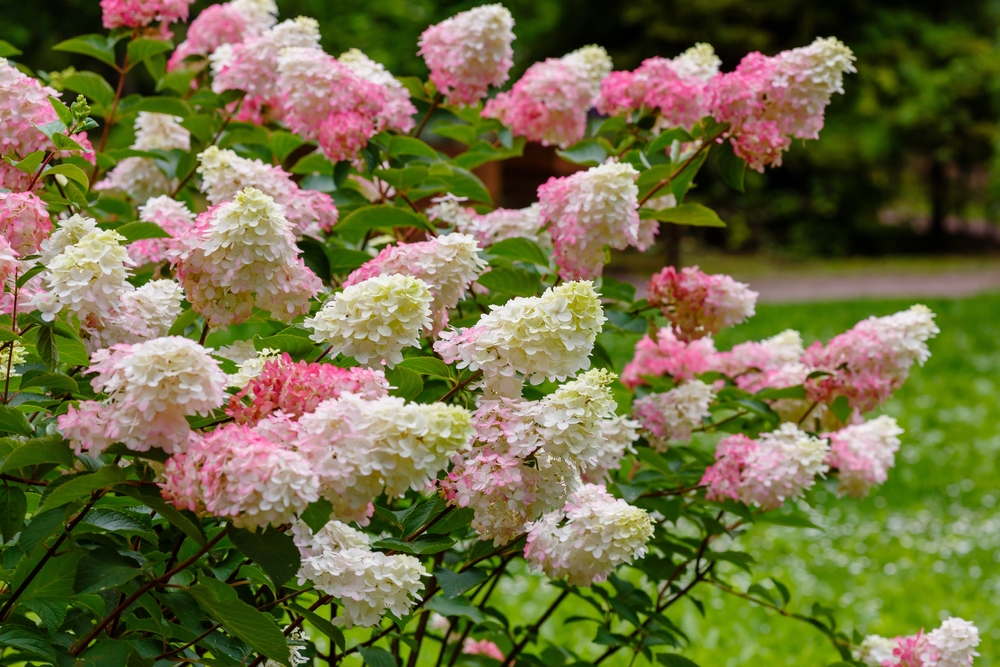
Panicle hydrangeas feature cone-shaped flower clusters that start white and often fade to pink or green. They bloom later in the season, usually from mid-summer into fall. These shrubs can grow taller than many other hydrangeas, sometimes reaching up to 15 feet. They tolerate more sun compared to other types, which makes them versatile. Their blooms are striking when planted as hedges or focal points.
Popular varieties like ‘Limelight’ and ‘Pee Gee’ are well-loved for their strong performance. Their flowers can also be dried and enjoyed indoors during the winter months. Panicle hydrangeas are hardy and thrive in cooler climates where other types may struggle. They work well for both formal gardens and casual landscapes. Their ability to produce reliable blooms makes them a trusted choice for many gardeners.
Smooth Hydrangea (Hydrangea arborescens)
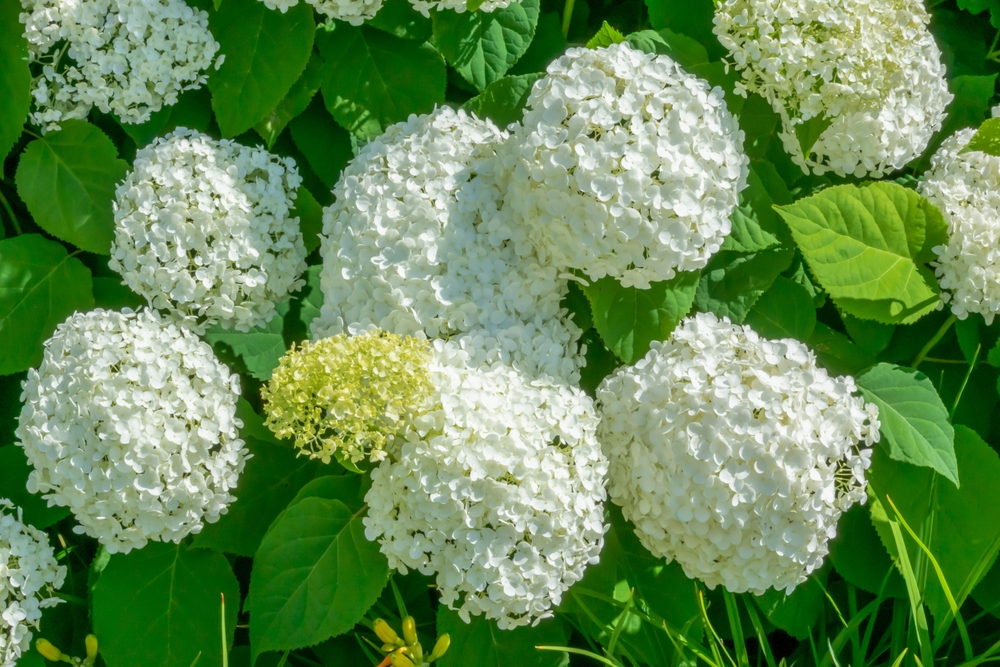
Smooth hydrangeas are native to North America and known for their round clusters of white blooms. A famous variety, ‘Annabelle,’ has large flower heads that can measure up to 12 inches across. These hydrangeas bloom on new wood, which means pruning in late winter encourages strong flowering. They grow best in partial shade but can tolerate full sun with enough moisture. Their soft, cloud-like blooms add charm to borders and foundation plantings.
These shrubs usually grow about 3 to 5 feet tall, making them suitable for smaller spaces. They are very hardy, thriving in cooler regions where some hydrangeas do not perform well. Their blooms are excellent for fresh or dried arrangements. With regular watering and pruning, smooth hydrangeas can remain full and healthy. They bring a refreshing simplicity to any garden design.
Climbing Hydrangea (Hydrangea anomala subsp. petiolaris)
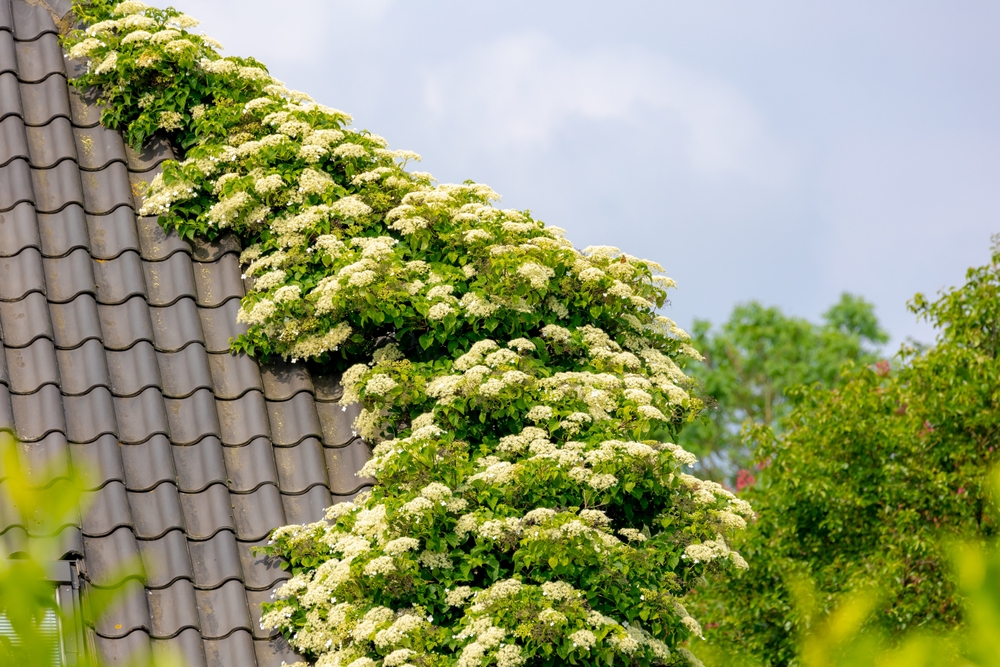
Climbing hydrangeas are unique because they grow as woody vines that can cover walls, fences, or trellises. Their lacy white flowers appear in early summer and last several weeks. They can grow up to 50 feet when supported, creating a dramatic effect. Their dark green leaves provide lush coverage during the growing season. In autumn, the leaves often turn golden yellow.
These vines cling to surfaces using aerial rootlets, so they require strong support. They grow slowly at first but become vigorous once established. Climbing hydrangeas do well in partial shade but will bloom more in sunnier spots. Their peeling bark adds winter interest, much like oakleaf hydrangeas. They are perfect for gardeners who want vertical interest in their landscapes.
Mountain Hydrangea (Hydrangea serrata)
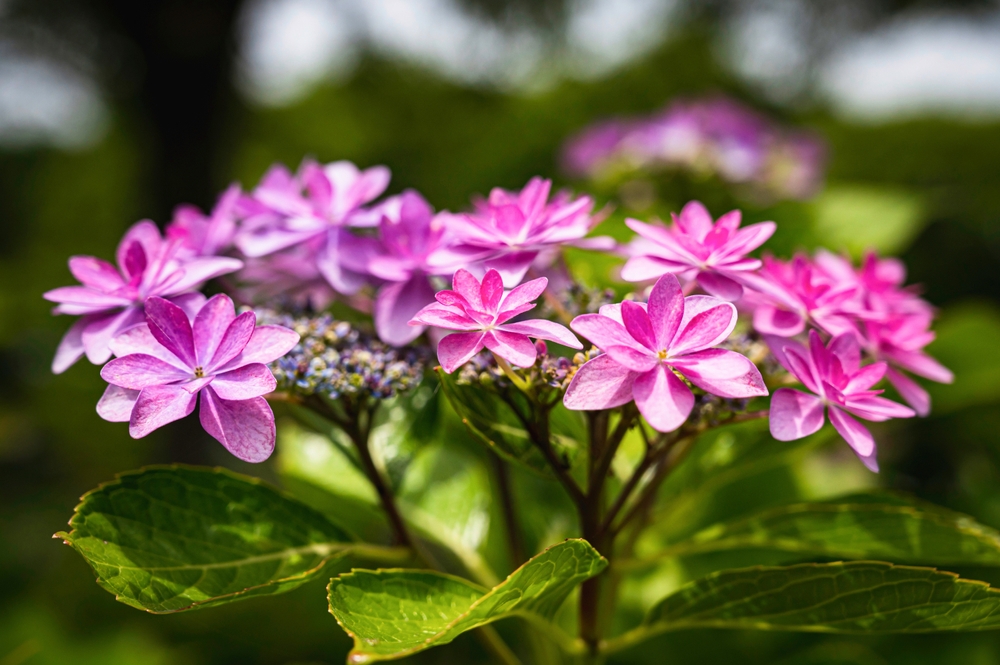
Mountain hydrangeas are smaller relatives of bigleaf hydrangeas. Their lacecap-style flowers give a delicate appearance with a ring of showy blooms surrounding tiny fertile flowers. They bloom in shades of pink or blue, depending on the soil pH. These shrubs are compact, usually staying under 4 feet tall. They are well-suited for smaller gardens or container planting.
Their blooms appear from early summer through mid-summer, offering a shorter but charming display. Gardeners appreciate their cold tolerance, which makes them more reliable in northern climates than bigleaf types. They thrive in partial shade and evenly moist soil. Their fine texture pairs well with larger-leaved plants in the garden. With their dainty look, they bring an understated beauty to landscapes.
French Hydrangea
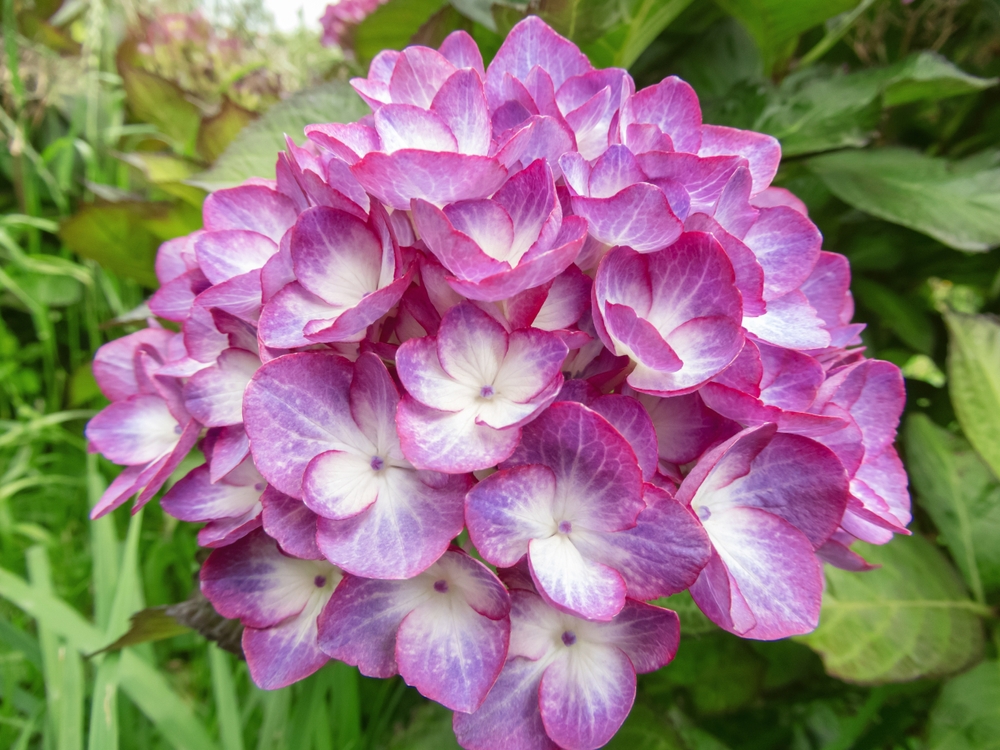
French hydrangeas are another name commonly used for bigleaf hydrangeas, but they are often thought of as the most ornamental forms. Their mophead blooms are showy, with petals that create a rounded cluster. These shrubs are staples in cottage-style gardens and formal borders alike. They grow well in partial shade and respond to acidic or alkaline soil with different colors. Their bloom time is typically from late spring to midsummer.
These hydrangeas are loved for their wide range of colors, including pink, blue, purple, and even mixed shades. They grow between 3 and 6 feet tall, making them easy to maintain. Their flowers are excellent for fresh bouquets and drying. With the right care, they can bloom abundantly year after year. French hydrangeas remain a timeless favorite for garden enthusiasts.
Lacecap Hydrangea
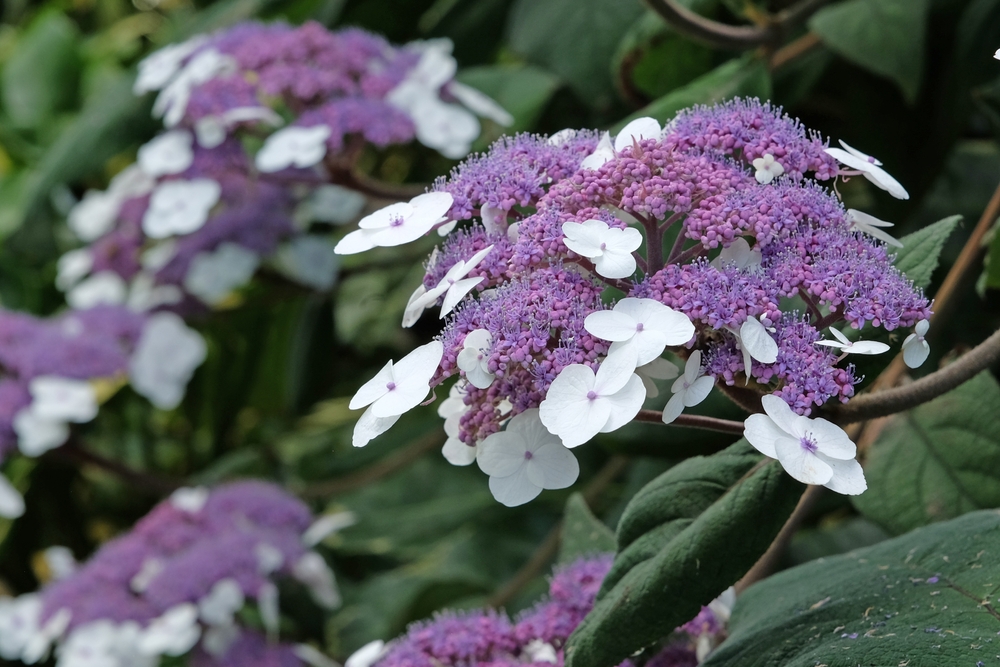
Lacecap hydrangeas have a more delicate look compared to mophead varieties. Their flower clusters feature a flat shape with tiny fertile flowers in the center and larger blooms around the edges. They bring a more natural style to garden beds and borders. Their blossoms come in shades of blue, pink, or white, depending on soil conditions. They are versatile and can thrive in both containers and landscape plantings.
These shrubs typically grow about 3 to 6 feet tall. They bloom during the summer, offering long-lasting beauty. Gardeners enjoy pairing them with shade-loving plants like hostas or ferns. With their lacy appearance, they stand out without overwhelming the space. Lacecap hydrangeas are excellent for adding texture and elegance to the garden.
Mophead Hydrangea
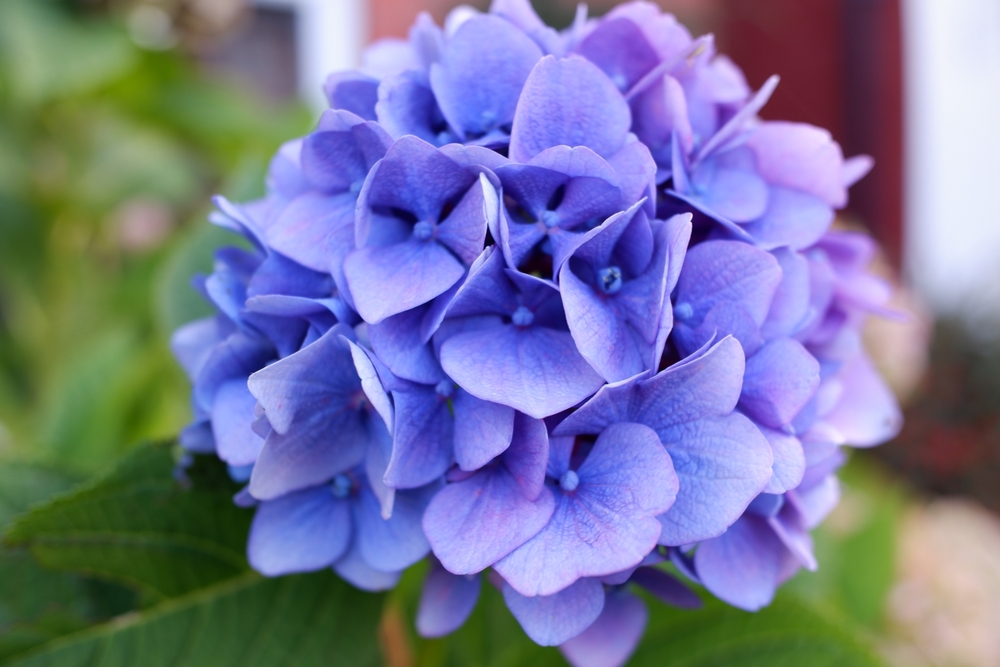
Mophead hydrangeas are the most recognized form of hydrangeas with their globe-shaped clusters of flowers. They bloom in bold shades of pink, blue, and purple depending on soil acidity. Their full flower heads make them ideal for garden focal points and borders. They prefer partial shade and rich, moist soil for best results. Blooming usually occurs from late spring through summer.
These hydrangeas grow about 3 to 6 feet in both height and width. They are also excellent for cutting and bringing indoors for fresh arrangements. Their flowers can dry well, extending their charm even past the growing season. They need protection in colder climates, but with care, they remain reliable bloomers. Mophead hydrangeas are an essential choice for a colorful garden.
Endless Summer Hydrangea
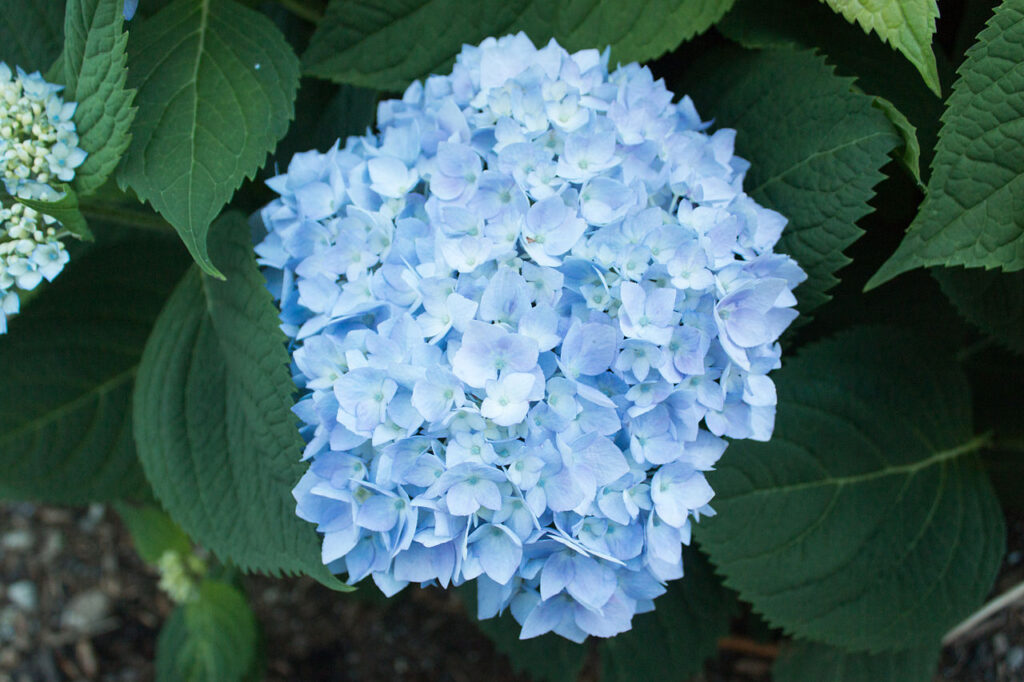
Endless Summer hydrangeas are a popular variety because they bloom on both old and new wood. This means they can produce flowers multiple times during the season. Their blossoms range from pink to blue depending on the soil pH. They grow well in partial shade and reach about 3 to 5 feet tall. These hydrangeas are known for keeping the garden colorful from spring through fall.
They are hardy in colder regions, which makes them reliable for gardeners who struggle with other varieties. A layer of mulch helps protect the roots and maintain moisture. Their flowers are excellent for cutting and look beautiful in vases indoors. With their repeat blooming ability, they are a favorite among homeowners. Endless Summer hydrangeas are valued for extending the flowering season.
Cityline Hydrangea
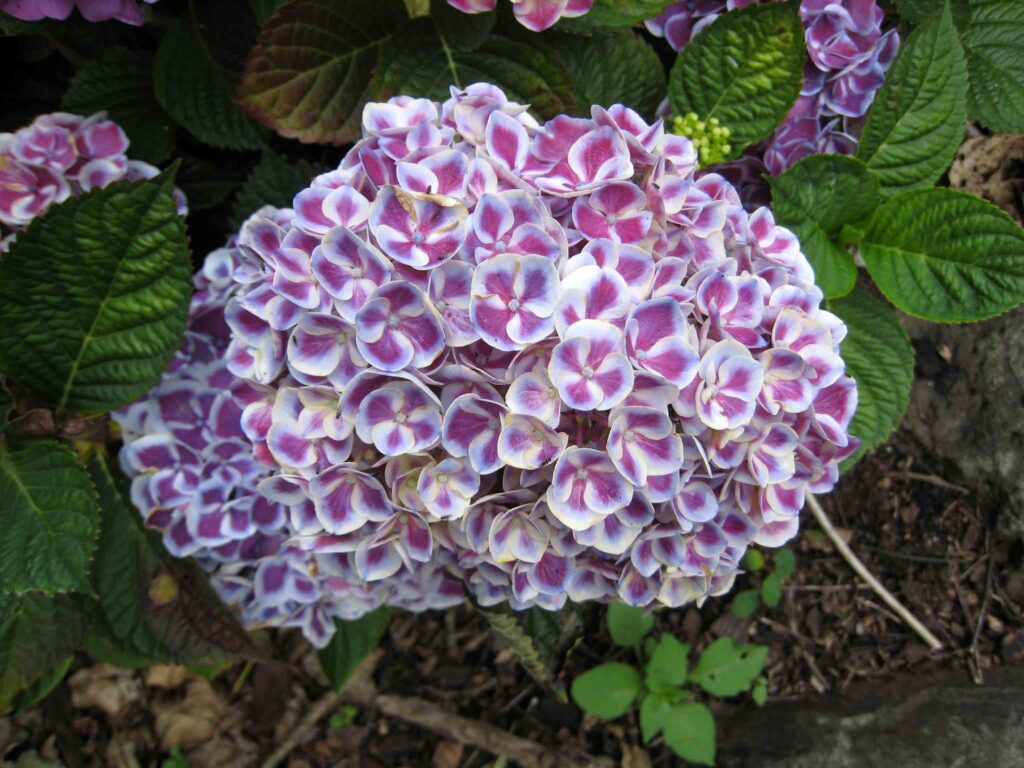
Cityline hydrangeas are compact shrubs perfect for smaller gardens and containers. They usually stay under 3 feet tall, making them ideal for patios or limited spaces. Their blossoms are large and come in vibrant shades of pink, blue, and purple. They bloom in early to mid-summer, creating a cheerful display. These shrubs have strong stems that prevent the blooms from drooping.
Cityline hydrangeas are also resistant to mildew, which helps keep the foliage looking fresh. Their small size makes them easy to manage without frequent pruning. They are perfect for front borders or decorative planters. These shrubs bring plenty of color without taking up too much space. Cityline hydrangeas are a practical yet striking choice for home gardeners.
Tardiva Hydrangea
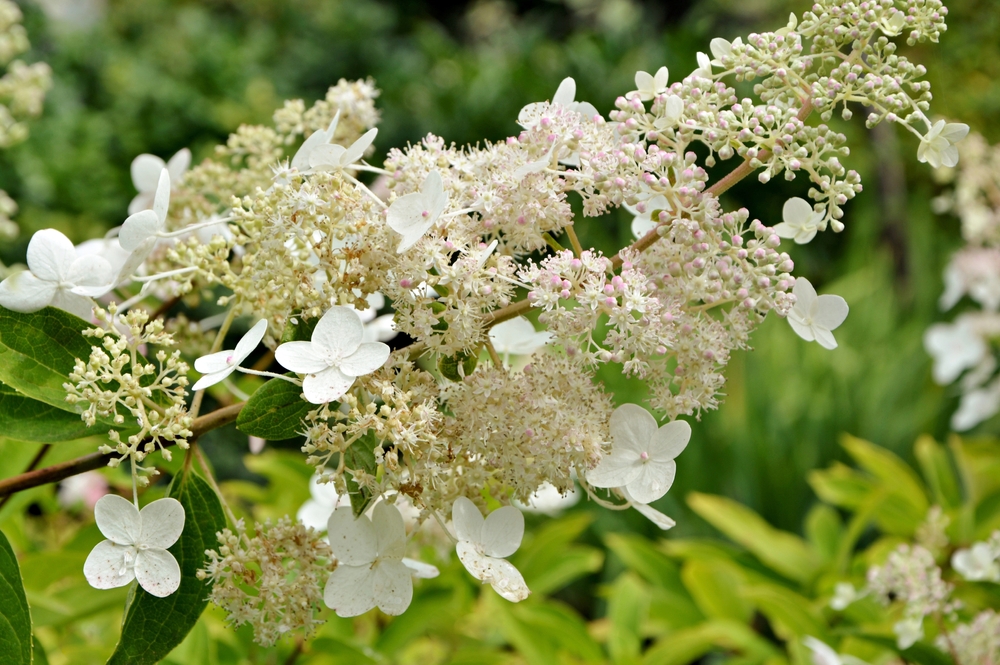
Tardiva hydrangeas are a type of panicle hydrangea that bloom later in the season. Their flowers appear in late summer and last well into fall. The blossoms are creamy white and turn pink as they age. These shrubs are smaller than some panicle types, usually growing 6 to 8 feet tall. They thrive in full sun to partial shade.
Their extended blooming season makes them a useful choice for filling gaps in late-season color. The flowers are attractive to pollinators such as butterflies. Their strong branches hold the blossoms upright, giving a neat appearance. They can be used in hedges, mixed borders, or as standalone plants. Tardiva hydrangeas bring reliable late-season interest to gardens.
Quick Fire Hydrangea
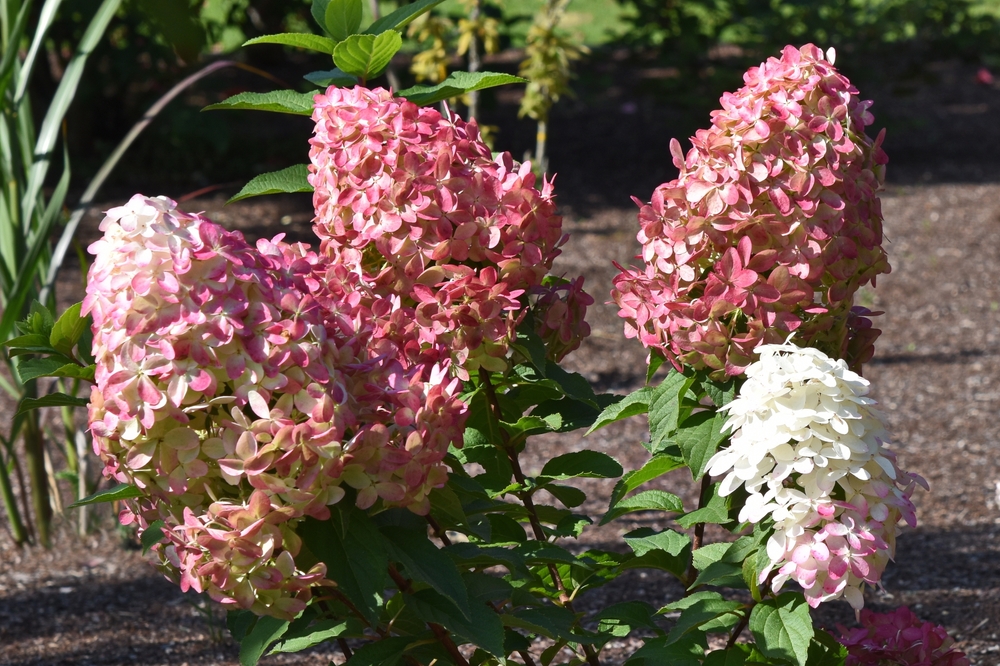
Quick Fire hydrangeas are known for blooming earlier than most panicle hydrangeas. Their flowers appear in early summer, several weeks before other panicle types. The blossoms begin white and quickly age to pink and red shades. These shrubs can grow 6 to 8 feet tall with a rounded form. They are hardy and adapt well to a range of soil conditions.
Gardeners appreciate their long season of color that begins early and lasts into fall. Their bold blooms make them great statement plants in the landscape. They are also excellent choices for cutting and drying arrangements. With their toughness and vibrant color changes, they bring steady charm to the garden. Quick Fire hydrangeas are loved for their early and extended display.
Incrediball Hydrangea
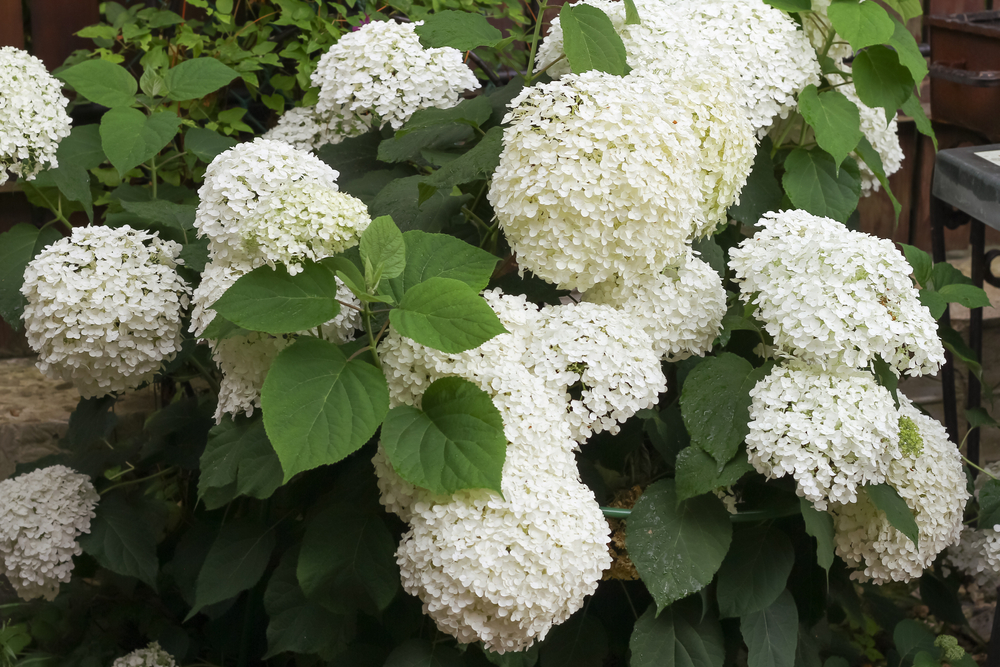
Incrediball hydrangeas are an improved variety of smooth hydrangea. They are known for their huge, round flower heads that can reach up to 12 inches across. Their blossoms begin as lime green and mature to pure white. The strong stems hold up the heavy blooms, reducing flopping. These shrubs usually grow about 4 to 5 feet tall.
They bloom on new wood, which means pruning in winter encourages strong flowers the next year. Their showy blossoms are excellent for fresh and dried arrangements. They are hardy and reliable in many climates, making them versatile. Gardeners love them for their impressive size and lasting performance. Incrediball hydrangeas bring dramatic beauty to any garden bed.
Pee Gee Hydrangea
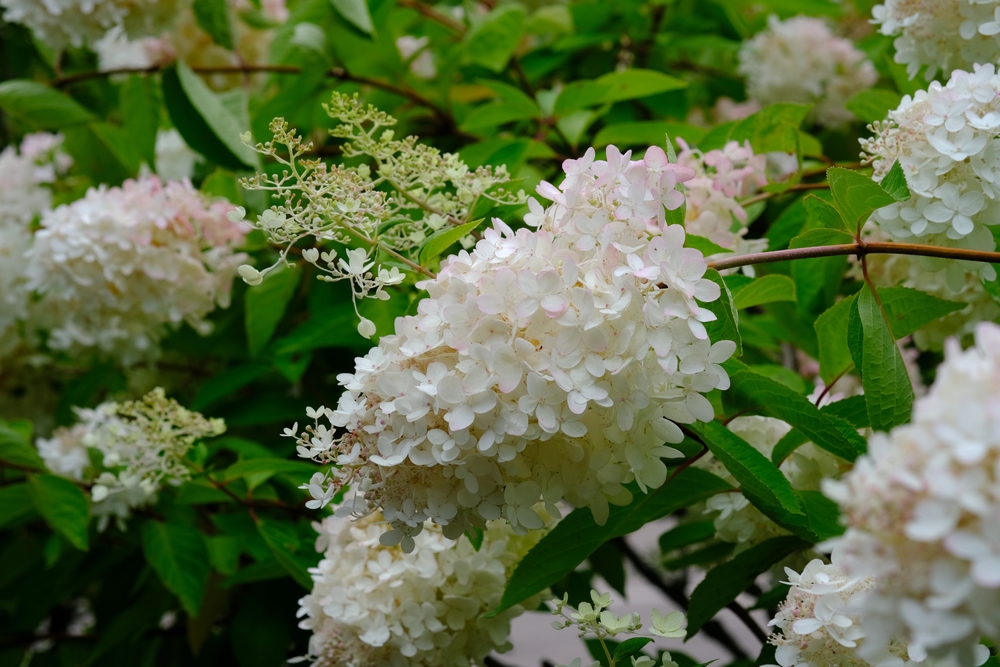
Pee Gee hydrangeas are one of the earliest cultivated panicle hydrangeas. Their name comes from the abbreviation of Hydrangea paniculata ‘Grandiflora.’ They grow large cone-shaped flowers that start white and slowly turn pink. These shrubs can reach 10 to 15 feet tall, sometimes even trained as small trees. Their blooms appear from mid to late summer.
They are well-suited for cooler regions and tolerate more sun than other hydrangeas. Their flowers dry well, making them a popular choice for crafts and arrangements. Gardeners appreciate their reliability and size, which make them excellent focal points. Pee Gee hydrangeas have stood the test of time as a classic garden plant. With their striking appearance, they remain one of the most admired types.
Snowflake Hydrangea
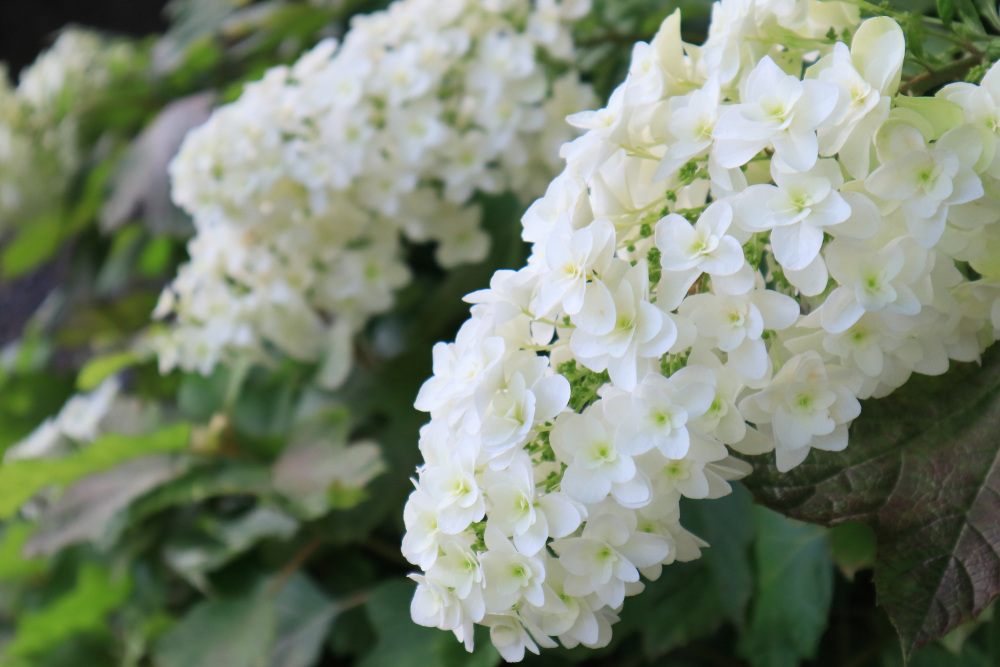
Snowflake hydrangeas are a double-flowering form of the oakleaf hydrangea. Their blossoms feature layers of petals that create a full and fluffy look. The flowers start white and age to pink and tan, lasting for weeks. These shrubs grow 4 to 8 feet tall and prefer partial shade. Their bold foliage also adds interest when the blooms are not present.
In autumn, their leaves turn shades of red and burgundy, providing seasonal beauty. Their peeling bark also adds texture during winter. Snowflake hydrangeas are hardy and reliable in a wide range of conditions. They work well as specimen shrubs or in naturalized landscapes. With their layered flowers, they bring a unique twist to traditional hydrangeas.
Seaside Serenade Hydrangea
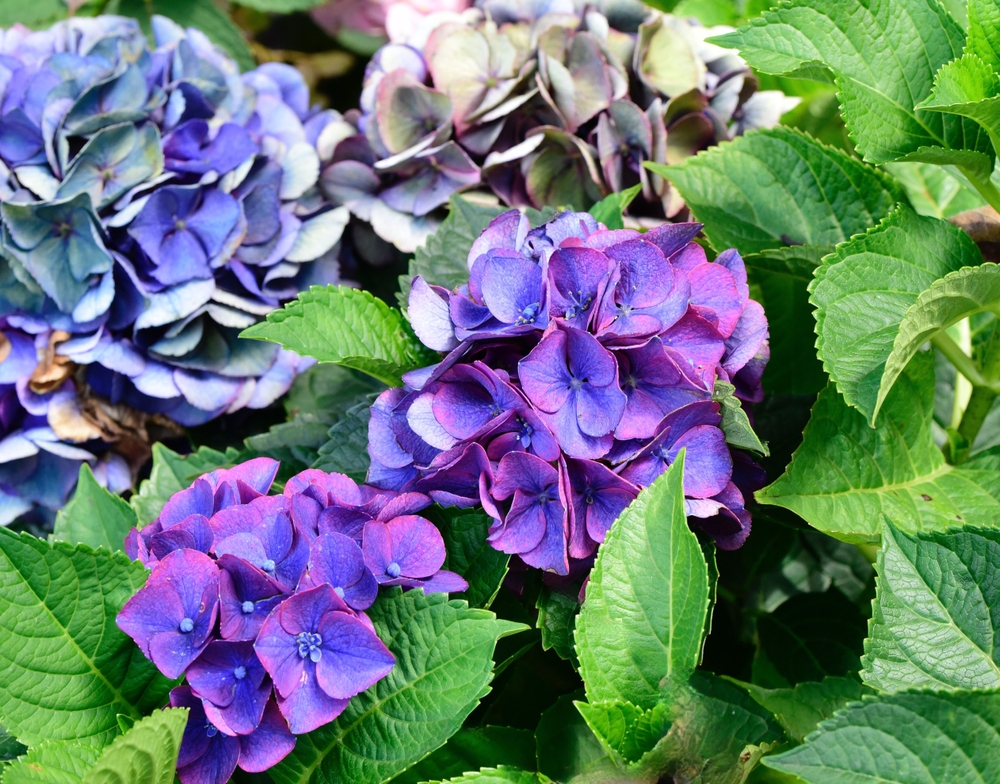
Seaside Serenade hydrangeas are a series of compact varieties bred for containers and small gardens. Their flowers are long-lasting, with many holding color for weeks without fading. They come in shades of blue, pink, and white depending on soil conditions. These shrubs stay around 2 to 4 feet tall, making them manageable. They bloom from late spring through summer.
They are often chosen for patios, entryways, and decorative garden borders. Their sturdy stems keep the blooms upright and neat. Their blossoms are also excellent for cutting and displaying indoors. Seaside Serenade hydrangeas offer many named varieties, each with its own unique look. These shrubs provide beauty in compact spaces without requiring much maintenance.
Hydrangeas are timeless plants that can transform a garden into a relaxing and colorful haven. Their blossoms are admired for their beauty, and many varieties reward you with extra seasonal interest. They are easy to grow in different conditions, making them a favorite for gardeners of all levels. Bring them into your outdoor space and enjoy the charm they add season after season.
This article originally appeared on Avocadu.
